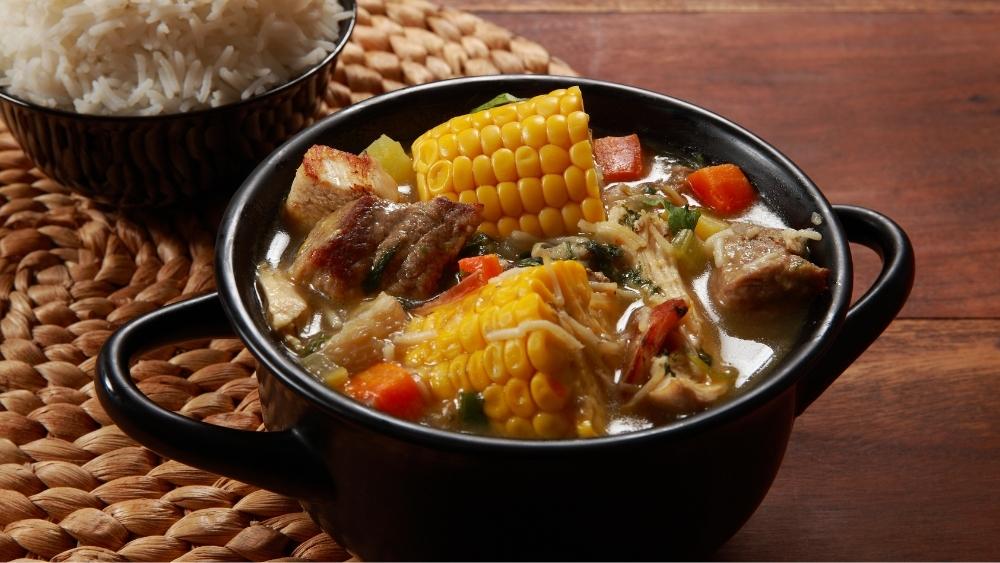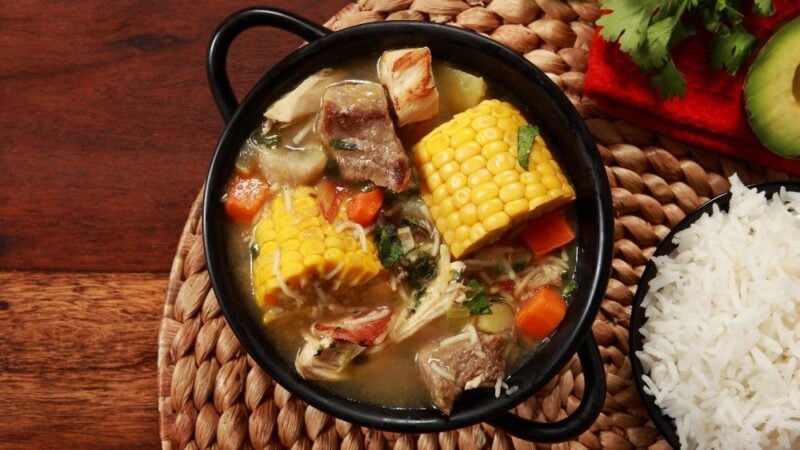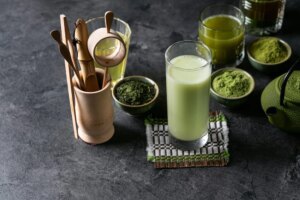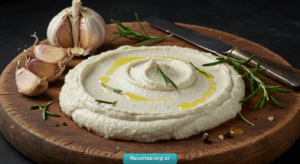
Be welcome and welcome! Today we are going to talk about sancocho. This traditional Colombian dish is one of those cultural treasures turned into a stew, prepared with love in a home and enjoyed with loved ones. Nothing more beautiful.
On this occasion we are going to go through every detail of this Colombian soup, from its usual ingredients, its history, the variants prepared by each region, and a recipe to enjoy it in the warmth of the home.
About the sancocho
Sancocho is a thick and comforting soup, originally from Colombia that combines ingredients from different influences, elements, a result of the cultural fusion that occurred during the colonial era in that region.
This Colombian soup typically includes meat (chicken, beef, pork, or a combination), root vegetables (such as cassava, potato, and plantain), corn on the cob, cilantro, and other regional ingredients.
The soup is simmered until the meat is tender and the vegetables are soft. Sancocho is appreciated for its warmth and its ability to feed many people, making it a common dish at celebrations and family gatherings.
History and origin of sancocho
The origin of Colombian sancocho dates back to pre-Columbian times with indigenous, African and Spanish influences. Before the arrival of the Spanish to Colombia, indigenous communities already had their own ways of cooking food. Cooking meats and vegetables in a large pot of water was common in many cultures.
With the arrival of the Spanish conquistadors in the 16th century, new ingredients were introduced, such as beef and pork, onion, garlic and cilantro. These elements were incorporated into local culinary practices and gave rise to variations of sancocho.
During colonial times, Africans brought as slaves also influenced Colombian gastronomy. They contributed slow cooking techniques and the use of spices, which enriched the flavor of dishes such as Colombian soup.
The variants of the Colombian sancocho
Over time, sancocho diversified in Colombia. This dish represents the union of family and tradition and each region of the country has its unique variant. Some of those variants are:
- Costeño: in the region of the Caribbean coast the fish sancocho is popular. It is prepared with fresh fish, such as grouper or sea bass, and is complemented with banana, yucca, potato, corn on the cob, cilantro, and annatto to give it flavor and color. Coconut milk is a common ingredient in this variant, which gives it a tropical touch.
- Antioqueño: This variant is prepared with pork, Creole potatoes, corn on the cob, ripe banana, yucca, cilantro and annatto. Sometimes rice is added to give it greater consistency.
- Valluno: This recipe incorporates beef, pork or chicken. The characteristic ingredients are cob, cassava, banana, potato and carrot. It is usually served with rice, avocado and chili.
- Tumaco: In this port on the Pacific coast of Colombia, a variant is prepared with fish, which incorporates native ingredients and coconut milk, which gives it a unique and tropical flavor.
- Of chicken: In many regions of Colombia, sancocho de gallina is a celebratory dish. It is prepared with Creole chicken, cassava, potato, corn on the cob, banana and other ingredients.
The ingredients of Colombian soup and their similarities
Colombian sancocho is known for a combination of elements that give it a unique and delicious flavor. Essential ingredients include meat, which can be chicken, beef, pork or a combination of these; tubers such as potatoes, cassava and bananas; corn on the cob; cilantro and green onion. In addition, annatto is usually used to give color and flavor, and a chicken or meat broth as a base.
Many of these ingredients are found in other combinations, in different traditional dishes from Latin America and Spain, such as Madrid stew, Colombian ajiaco, meat stew or chicken stew, and Argentine stew. These classic recipes share the idea of cooking meats, vegetables, and root vegetables in a broth base, resulting in a hearty soup or stew.
5 tips for preparing sancocho
- Slow cooking technique: Slow cooking is essential for the flavor of the sancocho to fully develop.
- Add the annatto in moderation: Annatto gives color and flavor to the soup, but it is important to add it little by little until you achieve the desired color and flavor.
- Add the cilantro at the end: To maintain its freshness and flavor, add cilantro and green onion at the end of cooking.
- Share the sancocho: This Colombian soup is a very filling dish that is best enjoyed in the company of family and friends.
- Traditional accompaniments: Colombian sancocho is traditionally served with white rice, avocado, chili and capers.
Follow me on Instagram (here)
And on YouTube I upload new videos every week (click here)
Original Colombian sancocho recipe
Yield: 6 servings
Preparation: 3 hours
Ingredients
- 1 k of beef
- 2 ears of corn
- 2 yuccas peeled and cut into pieces
- 2 potatoes peeled and cut into pieces
- 2 carrots cut into pieces
- 2 green bananas, peeled and cut into slices
- 2 cloves of garlic, minced
- 1 tablespoon of annatto paste
- Chicken or meat broth (approximately 2 l)
- Chopped cilantro and green onion
- 1 teaspoon cumin
- Salt and pepper to taste
How to make Colombian sancocho step by step
- In a large pot, heat the achiote over low heat and mix with a little broth until completely dissolved.
- Add the meat to the pot and cook until it changes color.
- Add the corn cobs, yuccas, potatoes, bananas, carrots and chopped garlic cloves. Cover with the rest of the broth.
- Season with cumin and salt and pepper. Cook over low heat for about 1 and a half to 2 hours, or until the meat and vegetables are tender.
- Add the chopped cilantro and green onion at the end of cooking. Let it rest for a few minutes and serve hot.

Source: www.paulinacocina.net


